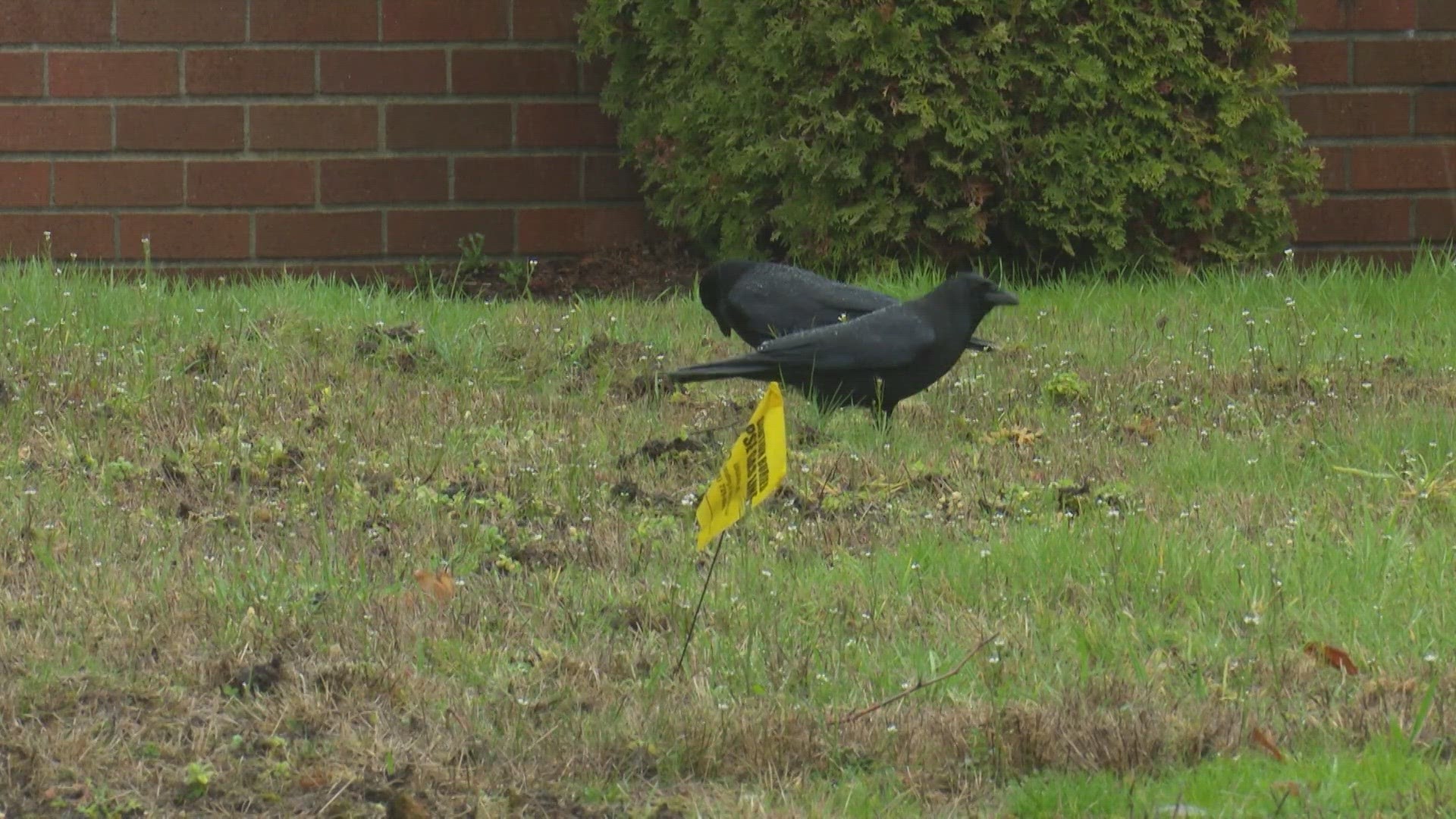FEDERAL WAY, Wash. —
It’s a trend happening across western Washington: crows are destroying lawns. Multiple KING 5 viewers wrote in, asking for advice and information. While residents are upset with the mess crows are making in their lawns, experts say it could be good in the long run. Here's why.
In Federal Way, Camille Perezselsky wrote:
“On behalf of my whole block, I am asking: What is up with all of the crows digging up large patches of grassy yards and turning them into giant mud pits? We heard it was that the crows are eating invasive beetles, but we need advice on how to stop it, repair our lawns and prevent it in the future. HAAAALP Ciscoe!”
Nicolas Albanese wrote:
“So I live in Kent, and my lawn looks like it has been thatched, but it definitely wasn’t. I’ve noticed more houses along my street and others blocks away with the same condition. I am thinking it’s birds digging for some sort of insect but I have no clue. Help me, Ciscoe!”
We asked our resident gardening expert, Ciscoe Morris, to visit one of the homes to figure out why these crows are digging and how to stop it.
Ciscoe took one look at Camille’s Federal Way lawn and knew the answer.
“Yeah, you’ve got a beetle,” he told her.
Ciscoe said the European Chafer Beetle started on the East Coast in the 1940s and has since moved west, arriving in the Pacific Northwest in 2015. In the last ten years, the problem has grown, sometimes even attracting raccoons and skunks.
“This is a gourmet treat for crows,” he said, explaining that the crows are digging for the beetles to eat, which seems like a nuisance, but is good in the long run because the beetles are invasive and will also kill the grass.
The two then shoveled one hole out of the lawn, confirming the theory: multiple, small larvae with c-shaped bodies and noticeable legs squirmed out.
The beetles, if left alone, would also kill the lawn.
“They're [the beetles] eating the roots. So they’re wrecking your lawn either way. It's not going to look like this but it’s going to thin out really bad,” he said, pointing to the piles of pulled-up grass in Camille’s yard. “You got pests and then the beneficials come in and eat up the bad guys and it is kinda the circle of all of it. The crows are helping out, hard to believe as it is.”
Ciscoe said there is a way to kill the beetles, but it will take time and isn’t cheap.
He said in June, the grubs will turn into beetles and fly out of the grass and into the trees, likely causing an audible sound. Once that happens, Ciscoe suggests aerating the grass and then raking a grass seed into the holes. The best seed is a 50/50 mix of fescue and perennial rye.
Then, in July, he said to buy a container of nematodes. These beneficial worms will kill the invasive beetles in time for the fall.
“They invade the body of the grubs. It's kind of like a horror story. They invade the body of the grubs and then do them in,” explained Ciscoe.
Ciscoe also added that the grubs tend to attack lawns that are not well maintained, so keeping grass healthy can help keep them away.
Multiple University of Washington environmental and biology teachers agreed with Ciscoe.
UW Lecturer Loma Pendergraft emphasized that the crows are helping get rid of a pest, so the patches of dug-up grass are worth it.
UW Bothell Associate Teaching Professor Michele Price added that another pest seen in Washington is the European Crane Fly, which has a similar looking larvae and can also attract crows. Price said these larvae have a worm-shaped body and no visible legs.

